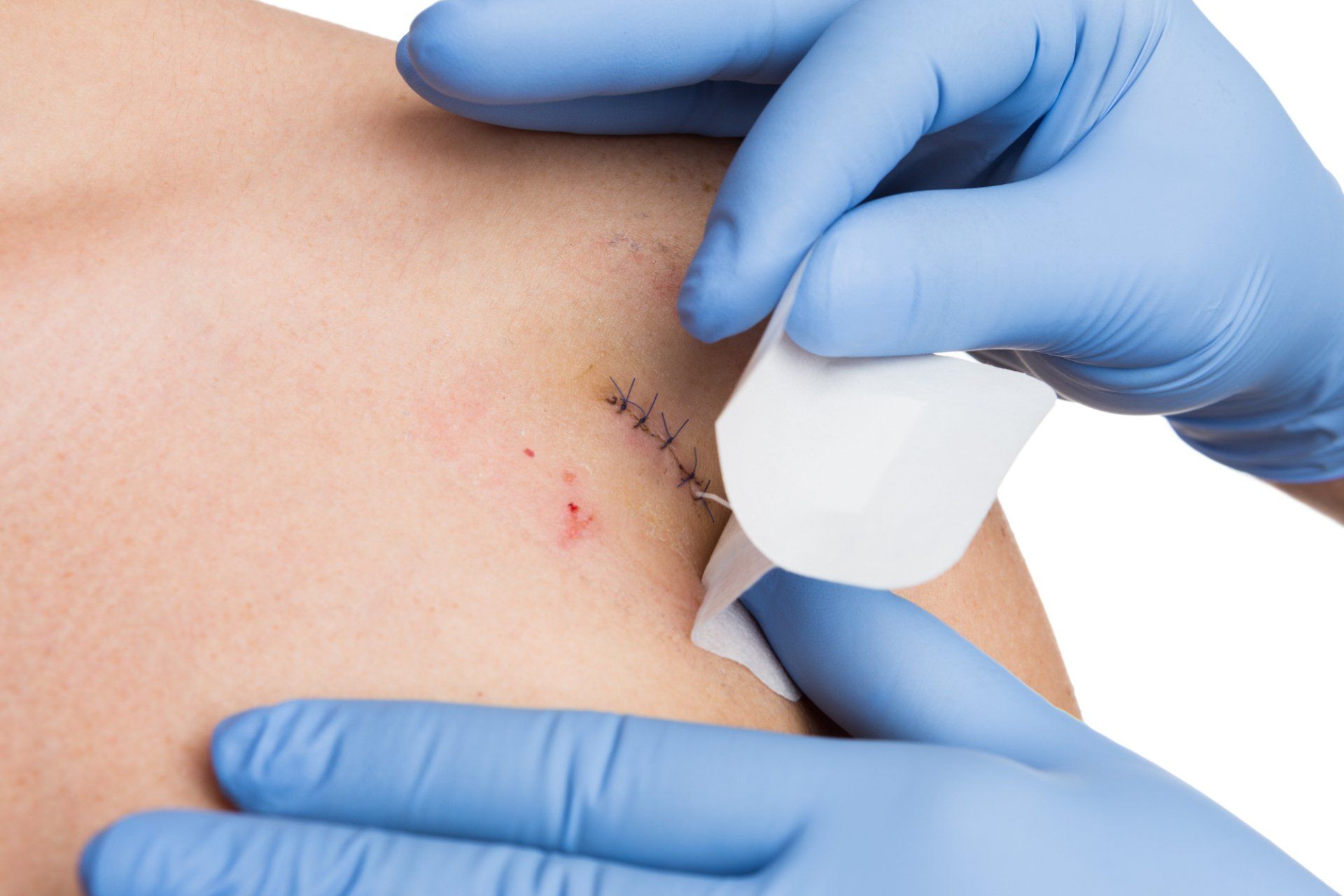NOW ACCEPTING NEW PATIENTS. CALL TODAY FOR AN APPOINTMENT.
Skin Surgery for Non- Cancerous conditions
Surgical Dermatology

Slide title
Write your caption hereButton
Benign Lesion Excision, cryosurgery, & more
We offer surgical excision (a procedure that cuts out or shaves off the lesion with a scalpel), electrodessication and curettage (a procedure that burns the lesion with electrical currents then removes it with a curette), and cryosurgery (the application liquid nitrogen to freeze the lesion) for the treatment and removal of all types of non-cancerous yet harmful skin growths, such as: atypical moles, skin tags, lipomas, cysts, boils, warts, actinic keratosis, and more. We also perform skin biopsies (the removal of a small portion of skin for laboratory analysis) to enable testing for skin cancer and other conditions.
-
POST-TREATMENT INSTRUCTIONS FOR SHAVE BIOPSY
Download a PDF copy of our Shave Biopsy After Care Instructions here.
Shave Biopsy –
POST-TREATMENT INSTRUCTIONS
Your biopsy site will be covered with a pressure dressing. This should be left in place and kept dry for 24 hours.
After 24 hours remove the bandage and begin once daily wound care as follows:
Clean the wound with warm soapy water (use a gentle soap like Dove) with a Q tip or gauze pad
Rinse thoroughly
Dry wound with a Q tip or gauze pad
Apply a layer of Vaseline or Aquaphor to wound
Cover wound with a non-stick gauze pad and paper tape or with a band-aid
Clean the wound and replace the dressing once a day until the wound is healed completely. This should take 7-10 days.
Shower normally – it is perfectly fine for the wound to get wet in the shower, however, if you do this, after your shower, clean the wound as above and replace the dressing.
Do not submerge the wound or participate in water activities like swimming until the wound is healed.
You should NOT leave the wound open to the air and you should NOT allow a scab to form. Contrary to popular belief, this impairs wound healing and increases scar formation.
BLEEDING
If significant bleeding occurs that soaks the dressing or leaks from the dressing, remove the dressing and apply direct pressure to the bleeding site with rolled up clean gauze or clean cloth. Keep constant pressure on the site for 20 minutes without removing the new dressing (this means no peeking to look at the wound for 20 full minutes).
Applying an ice pack over the entire area, over the gauze while holding pressure can also help stop the bleeding.
If bleeding continues after two 20-minute cycles of applied pressure, call the numbers below or go to the nearest emergency room.
PAIN
Your biopsy site should not be particularly painful. You can apply ice to the area or take Tylenol for discomfort. Don’t take Motrin, Ibuprofen, Aspirin or any other blood thinning medications.
A significant increase in pain may indicate a problem. Call the office if this occurs at (610) 484-3761.
-
POST-TREATMENT INSTRUCTIONS FOR EXCISIONS (SURGERY)
Download a PDF copy of our Excisions (Surgery) After Care Instructions here.
Excisions (Surgery) –
POST-TREATMENT INSTRUCTIONS
Stitches are special threads that are sewn through the skin at an injury site to bring the edges of a wound together. Care for your stitches and wound as follows:
Keep the area covered for the first 24 to 48 hours after stitches have been placed.
After 24 to 48 hours, gently wash the site with cool water and soap. Pat dry the site with a clean towel.
Apply Vaseline® or Aquaphor® to the area once or twice a day (it is important to keep the wound moist).
Cover the wound with a piece of gauze and tape or band aid.
If there was a bandage over the stitches, replace it with a new clean bandage.
Do not lift anything heavier than 10 pounds for the first two weeks after surgery.
Your wound may be tender to the touch but as time goes on it should become less painful.
If your wound is on your arm or leg, elevate that arm or leg as much as possible to help with circulation, healing and to prevent swelling and infection, and you may be asked to use crutches.
Call our office if you experience:
Pain that gets worse a few days after the procedure
Pronounced swelling - A temperature above 100.5 for 24 hours
Redness (increased outward from the wound, greater than an inch), warmth, swelling, and pus-like drainage at the site
Bleeding- If you have bleeding, apply firm pressure over the gauze pad for 20 minutes. If it doesn’t stop after 20 minutes, apply pressure again for 20 minutes.
Who do I contact with questions?
During regular office hours, please call us at: 610-484-3761.
For non-urgent matters, you may also reach us by e-mail at imarcy@mycleardermatology.com
Your healthcare provider will tell you when to come back to get the stitches removed. We will also contact you with your pathology report as soon as it is available.

Clear Dermatology | All Rights Reserved